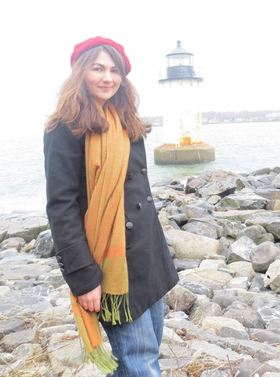
Dana Martin is an illustrator and designer who was born in New Mexico and has been roaming ever since. A recent graduate of Montserrat College of Art, her work has appeared in several local shows and was recently featured in CMYK’s Top New 100 Creatives.
Her clients include the Peabody Essex Museum, Hendrickson Publishers, Chrysler, ABDO, ArtThrob Magazine, and Ploughshares. The Johnstown Flood, scheduled for release this fall, will be her first illustrated chapter book.
Here is Dana showing and discussing her process:
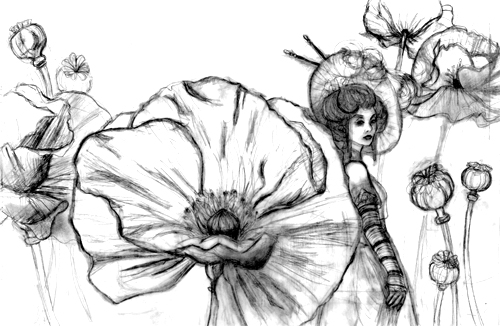
Once I’ve worked out my composition in thumbnails and sketches, I make a preliminary drawing.
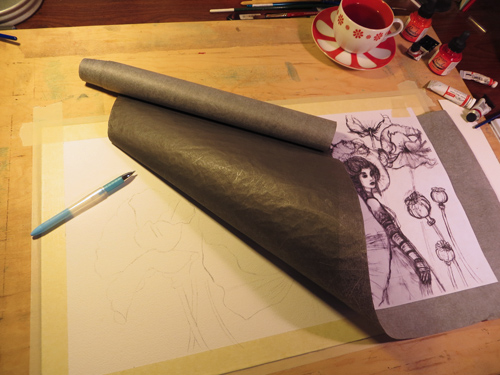
Then I transfer it to watercolor paper.
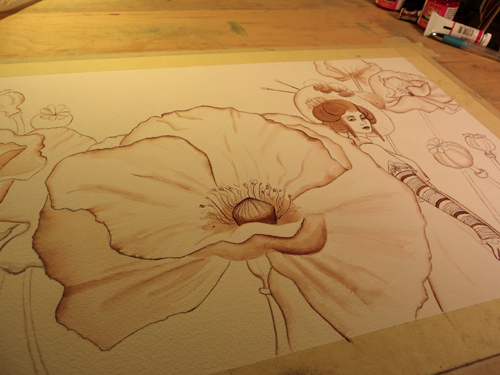
I ink the drawing, but I keep it pretty light, sticking to a color I know will blend well with the paint and feathering my edges. Once it’s dry, I add masking fluid to any light areas I want to preserve.

I wet the paper and paint my first coat, adding a little ink wherever I need the color to be bolder. Once that’s dry I add more masking fluid to the flower stems.
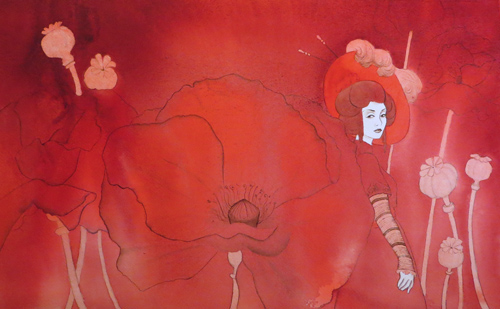
I do a second coat with darker red, and this time I really soak the paper to float the paint.
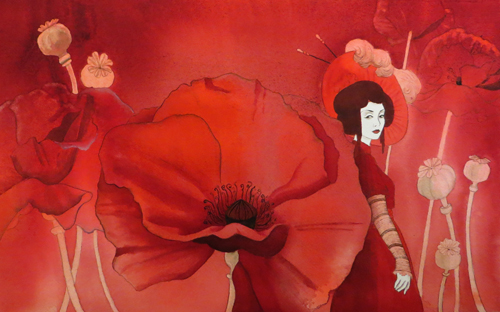
After that, it’s just about adding detail and building up a tonal range.
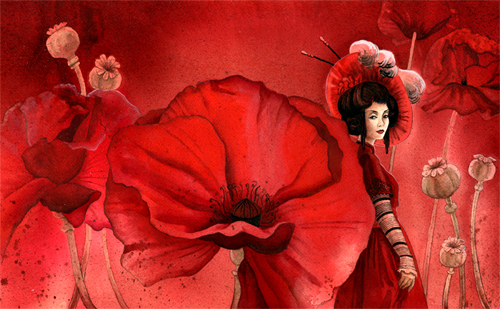
As a final step, I add a little splatter around the corners for texture.
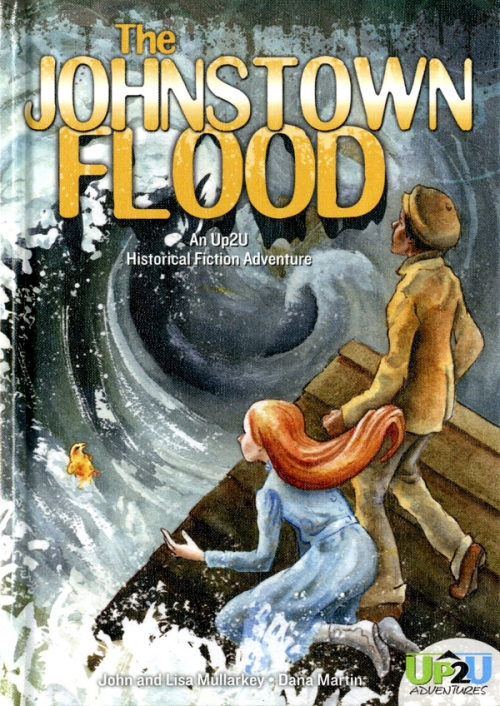
Above: The Cover of Dana’s First Illustrated Book. Below: A few back and white interior illustrations.
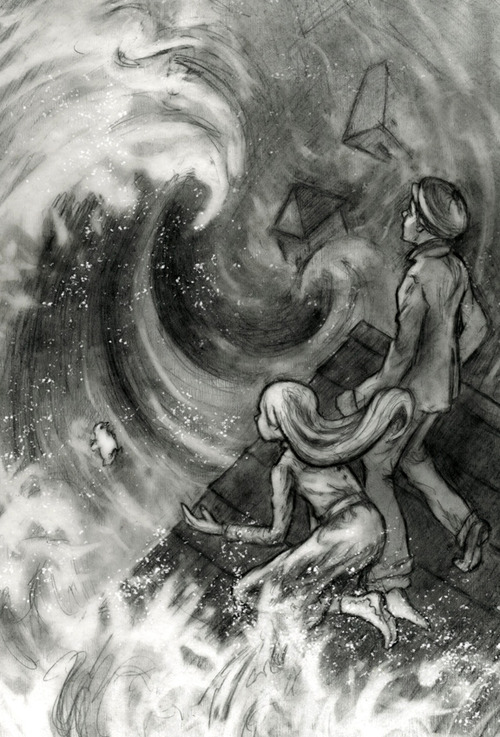
How long have you been illustrating?
3 years professionally.
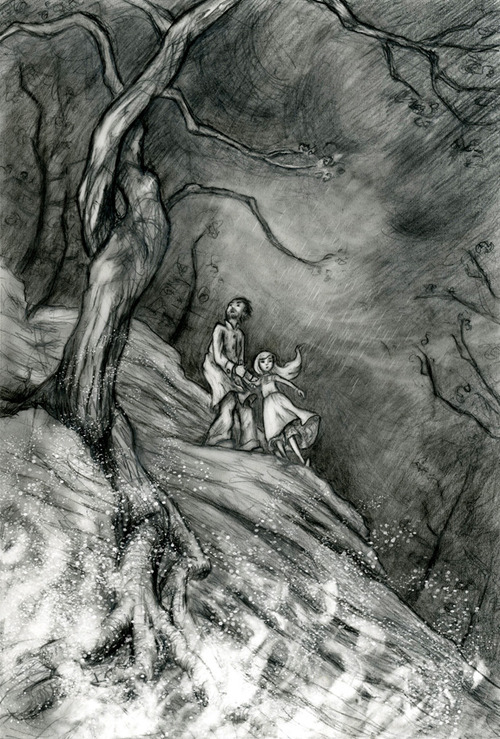
How did you decide to attend Montserrat College of Art?
Because I knew so little then about how to choose an art school, I started my search with two lists. One was of all the schools in the AICAD (Association of Independent Schools of Art and Design) and the other was of those in the NASAD (National Association of Schools of Art and Design). I wanted to go to a private college and I figured any school that made both the lists was probably pretty good (now that I know more about accreditation processes, this seems amazingly naïve). After that I just started investigating every school that was in both associations. Most of them didn’t offer illustration programs, so they were easy to cross off. Others I could tell just weren’t the right fit. I eventually applied to RISD, the University of the Arts in Philadelphia, and Montserrat, and was accepted into all three. At that point, the smart thing would have been to visit the campuses, but since I was in the middle of gen. ed. classes at a state university on the other side of the country, I couldn’t get away. I kept calling and emailing the admissions offices with more questions, and they all did their best to get me the info I needed. Montserrat was always the pleasantest to deal with, though, and I just started to get the sense that it was a place where I would really feel at home. This turned out to be true.
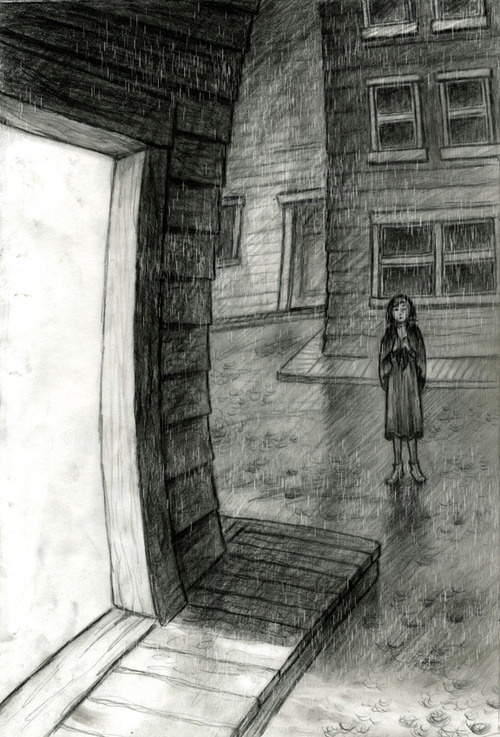
Can you tell us a bit about that school?
Montserrat is a quirky little school slightly north of Boston. They offer all the standard art school concentrations, but the illustration department is particularly strong. There’s an emphasis on building foundational skills rather than chasing the latest trends, and the learning atmosphere is great because the students and instructors are serious about their work, but not their self-image. It’s a down-to-earth and unpretentious community, something that’s not always easy to find in the art world.
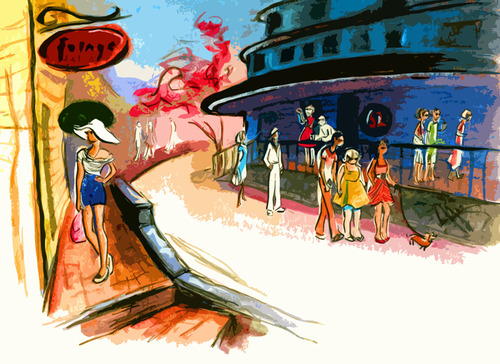
What were you favorite classes?
That’s a hard choice, I had a lot of great ones. I really enjoyed the natural science illustration class, because we learned a lot about botany and insects, and there was a whole closet full of butterflies, dried flowers, stuffed birds, and other treasures that we were free to borrow for sketching. My thesis class was also amazing, because I got to plan my own assignments but was supported by everyone’s feedback. Even the classes I wasn’t enthusiastic about, though, such as typography and web design, have proven invaluable since graduation.
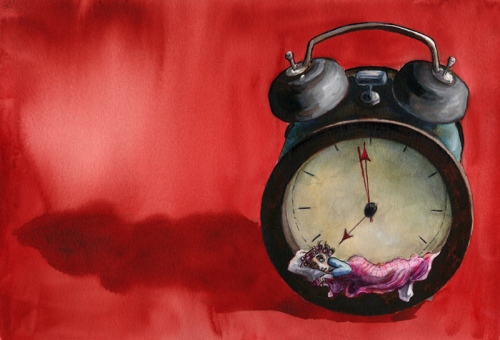
Did the school help you get work?
No, not directly. If there is one downside to a small college, it’s that the career department is also small and just doesn’t have the resources to place students in jobs right after they graduate. But the school did give me the skills I needed to get work for myself, as well as a wealth of friends and colleagues to help me on the way.
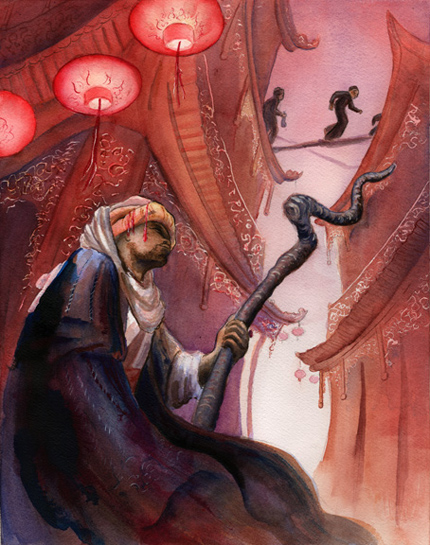
What did you do right after you graduated?
I continued with some of the things I’d already been doing in college – working at a library and helping with Montserrat’s summer program – but I did manage to get some small illustration jobs almost as soon as I graduated.
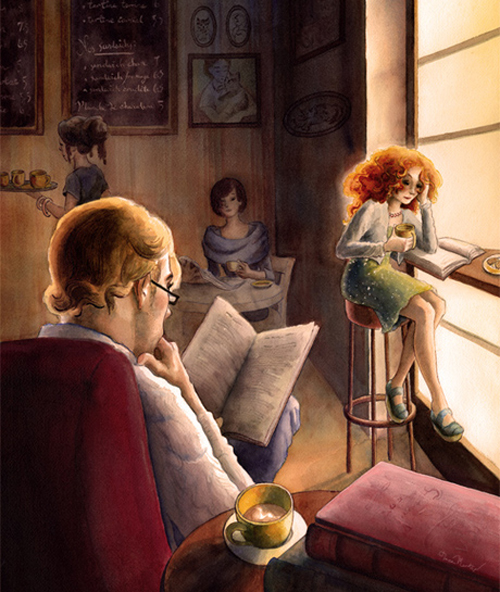
Do you feel that the classes you took in college have influenced your style?
One thing I appreciated about my instructors was that they didn’t steer students toward one style or another, but instead worked to help each of us sort out the voices we already had. I’ve always had an eye for detail, but when I started school, it was out of hand. My compositions were cramped and everything in the picture was competing for elbow room, so nothing could flow. The instructors helped me recognize the problem and find ways to open up the page.
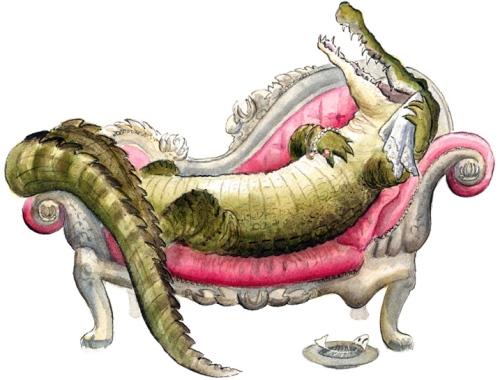
What was the first thing you did where someone paid you for your artwork?
I did some architectural illustrations for an organization that taught adults with developmental disabilities. They were planning to renovate a veterans memorial park, with the idea that their students would maintain it once it was finished and the whole community could enjoy it. But first they needed to raise the money, so my illustrations of the future park were designed for the fundraising brochures. It was the kind of obscure job that you only find through the friend of a friend; I heard about it because the assistant director of the organization was friends with a Montserrat alum, who kindly posted the job on one of the school’s social network pages.
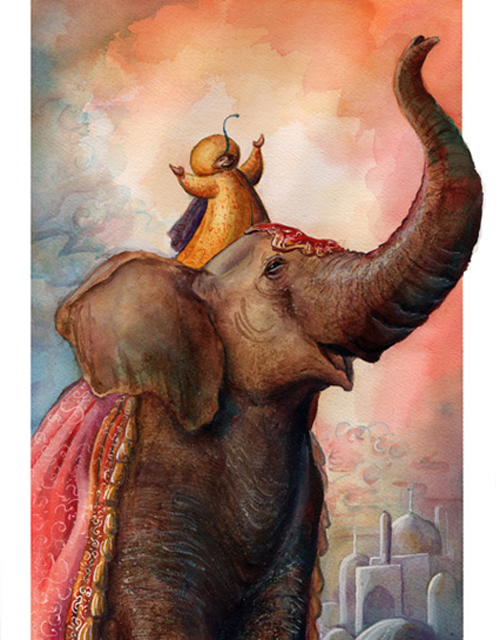
What was the first illustration work you did for children?
It was for Clubhouse Magazine. I was nine years old. So actually, come to think of it, that was my first paid work. I got ten dollars.
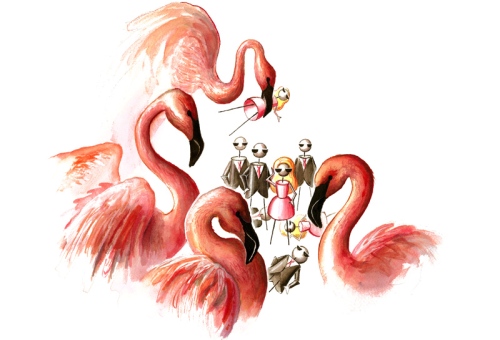
How did that come about?
Clubhouse used to put out one issue a year that was exclusively written and illustrated by children. Amazingly, the process hardly varied from what I now do professionally. I sent them a sample of my work (a horse, because to my nine-year-old self, horses were the supreme challenge, so drawing one was proof that I was a master artist). Someone from Clubhouse wrote back to say they liked it and would I care to illustrate the story they’d enclosed? It was a mystery story written by another child about a ticking bomb and a school band (it wasn’t really a bomb, just a metronome, and this was before bombs in schools had become such a fraught issue). I did a top-notch job on the metronome, because I’d just started piano lessons and knew exactly what it looked like. I did a derivative job on the bomb, because the only ones I’d seen were in Bugs Bunny cartoons. They also wanted a drawing of a trumpet, and I did a really terrible job on that. I couldn’t figure out all the twists and turns in the brass tubing, let alone where the trumpet player’s hands were supposed to go. The big difference between this project and all the subsequent ones was that I had no contact with the art director and nobody looked at my sketches; I was just supposed to mail everything in when I was finished. I’m pretty sure, though, that the art director felt the same way about the pictures as I did, because the story, the metronome, and the bomb made the first page of the magazine and the trumpet picture disappeared quietly into the night. They never printed it and I never saw it again, thank God.
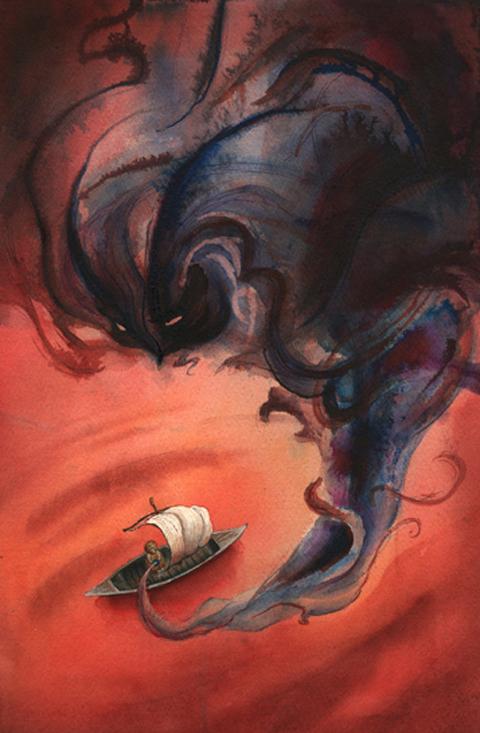
How did you get to be featured in CMYK’s Top New 100 Creatives?
I did have to submit work to be considered, but unlike most competitions, the judging was based on the whole portfolio rather than any one piece.
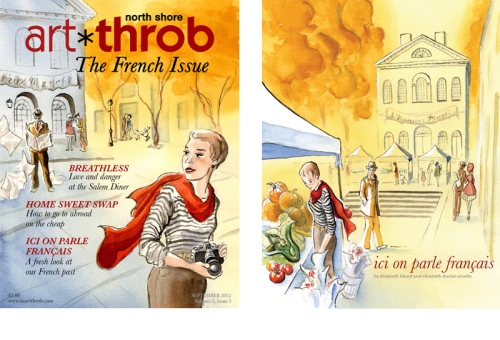
When did you decide you wanted to illustrate a children’s book?
I expect from the moment I first saw a children’s book. Even before I could read them I never went anywhere without one. Come to think of it, I still don’t.
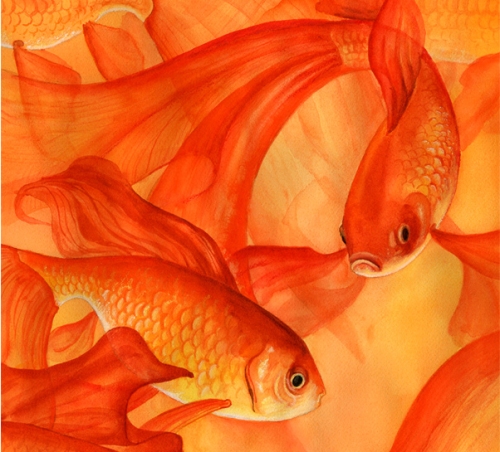
How did you get the contract to illustrate the chapter book titled The Johnstown Flood?
I had sent a black-and-white postcard to the publisher, ABDO, and one of their editors contacted me shortly after that because she had some black-and-white interior work. I’m thankful that she liked the card enough to comb through my blog, because the medium we went with was not at all what I’d sent her. She liked my preliminary drawings, which were all done in graphite. I’d never considered marketing them, because to me they seemed unfinished. I did push the drawings a bit for the book, using darker pencils and some Photoshop to get a wider tonal range, but the style was basically the same.
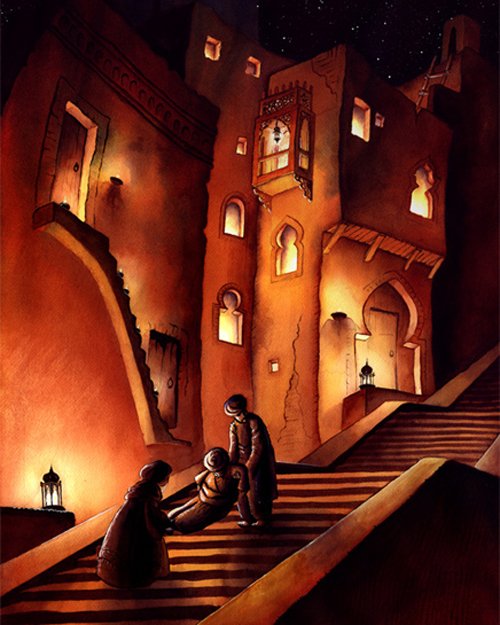
How long did it take you to illustrate that book?
I did the whole thing in a month. I could tell the editor was anxious to get it done; I think because it was part of a new line, the Up2U adventures, she needed some artwork to show the rest of her team.
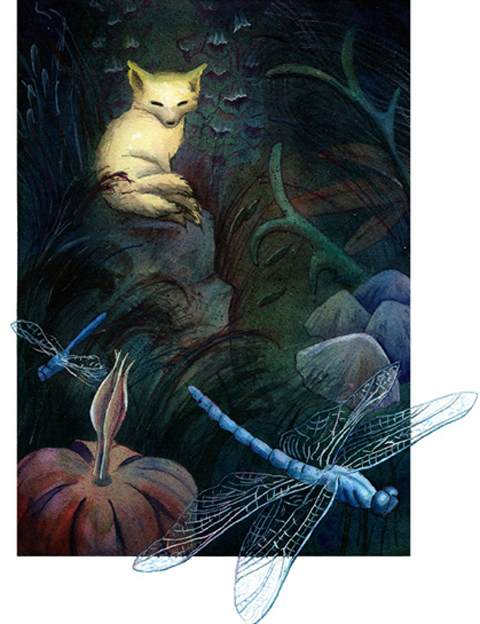
I know Lisa Mullarkey, but I didn’t know that her husband was writing with her now. Have you met Lisa?
No, sadly I have not had the pleasure. It’s so cool that you know her, though! I hope she and Mr. Mullarkey like the illustrations.
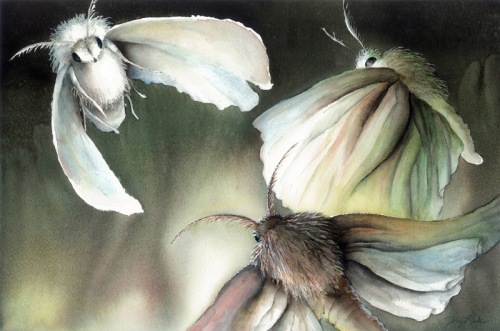
Do you have any other work planned with ABDO Publishing?
At the moment, no. As far as I can tell, the majority of the work they use is digital. The editor I worked with also left shortly after that book was finished.
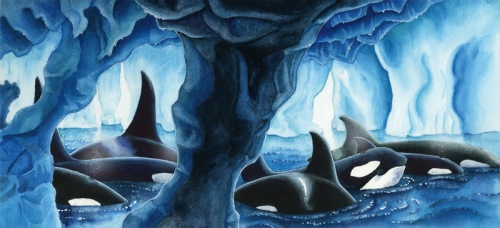
Do you plan on marketing your illustrations to other educational publishers?
I have, yes, and will continue to do so.
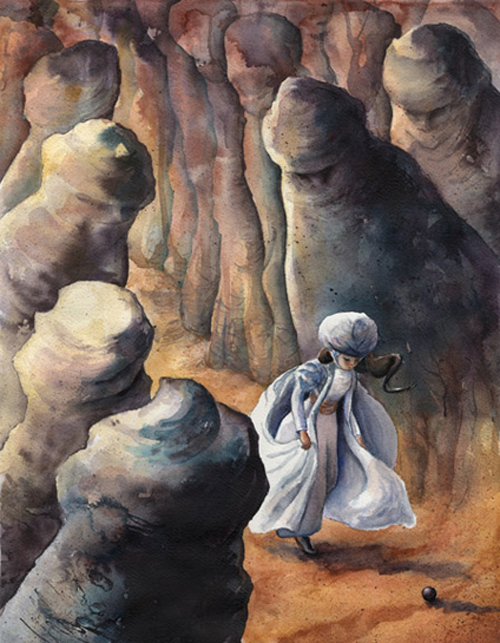
What was your first illustration success?
I did a t-shirt project for Ploughshares, and I was happy both with how the project turned out and how it was conducted, so I guess that was my first big success. Technically it was a design contest, but I and the other two artists were paid for our participation, and we all got to work with the wonderful editor Andrea Martucci to come up with designs that fit the magazine. The contest entries got so many online votes that Ploughshares decided to produce all three designs. So everybody won. Later that year I ran into Andrea at the Boston Book Festival, and she was just as nice in person as she’d been in her emails.
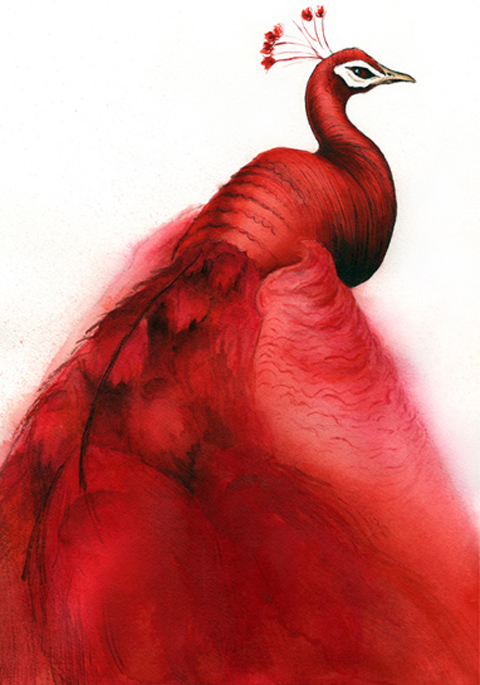
Do you think you will ever try to write and illustrate a picture book?
Oh yes, I already have and will continue to write more. I just haven’t gotten them published yet.

Have you done any illustrating for children’s magazines?
Yes, the main one has been Spellbound magazine. The editor and art director are both really great to work with and the magazine always has interesting, fantasy-related themes, so I always enjoy their assignments.
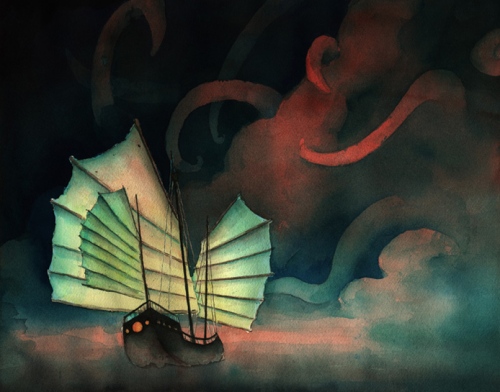
Do you have an artist rep or an agent? If so, could you tell us how the two of you connected? If not, would you like to get representation?
No, I don’t have one. I’ve heard some agent horror stories that made me wary of pursuing the matter. Obviously there are some amazing agents out there, but you are giving them a lot of power over the direction of your career. I can’t say I’d never be interested, but I would need to be confident that we were on the same page about where my work was going and how it would be represented.
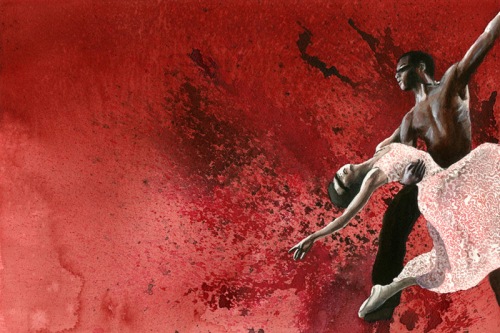
What types of things do you do to find illustration work?
I send out a lot of postcards and emails, meet people at conferences and events, and try to maintain a strong internet presence.
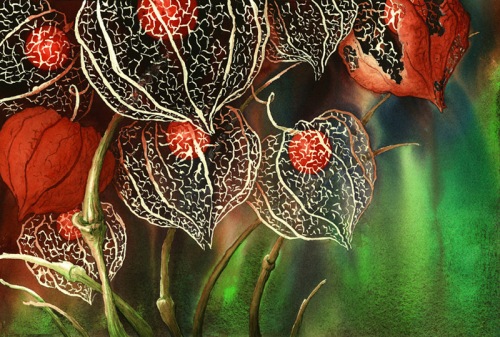
What is your favorite medium to use?
Watercolor
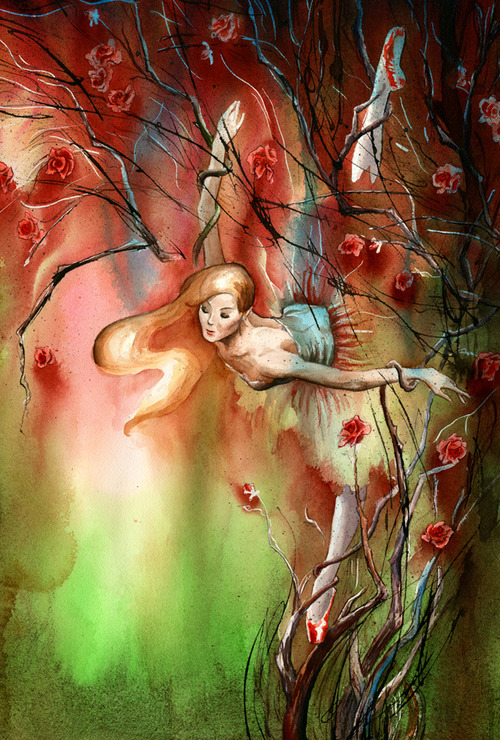
Has that changed over time?
No, but I’ve upgraded from the Crayola set. Now I use Winsor & Newton and Daniel Smith watercolors.
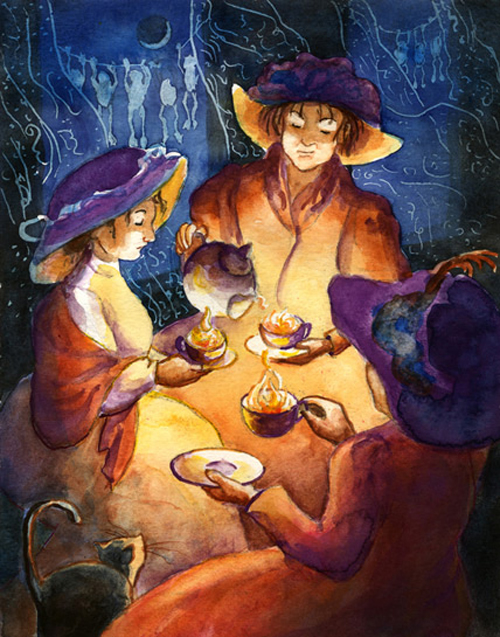
What is the one thing in your studio that you could not live without?
A cup of tea.
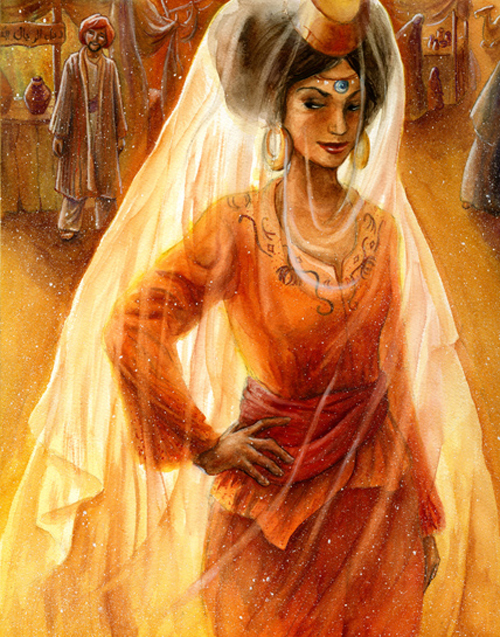
Do you try to spend a specific amount of time working on your craft?
I track the time I’m spending, but it’s usually not my goal to spend a specific number of hours. Instead, I review my time records now and then to help me evaluate things such as: how long did this project take and which part took longest, was the time well-spent, is there anything I’m repeatedly struggling over, when was I most productive, etc. This helps me figure out whether there’s anything I need to adjust in my routine.

Are you open to working with self-published authors?
Yes, cautiously open. Self-publishing has come a long way in the last decade, and there are some interesting projects out there that are too specialized for traditional publishing but can be successful as self-published books. I have worked with self-published authors in the past, and sometimes it was a great experience. Other times it was anything but.
Sometimes when authors pitch their projects to me, they say something along the lines of, “I have the whole book pictured in my head, and I know you’ll be able to paint it the way I see it.” But that is exactly what I cannot do, as I was born without mind-reading powers. I almost always turn these authors down, because I know they’re going to be disappointed once they figure out I’m not telepathic. (I wish I was joking about this, but it’s all too true.) Another problem I’ve run into is that authors may not realize just how massive an undertaking a book is. I’ve had authors offer me a few hundred dollars to do all the art and design work on a picture book, with no royalties, and they wanted me to sign away all rights into the bargain. They actually seemed to think it was a fair price.
Of course, there are also lots of brilliant authors who have done their research and have more realistic expectations. All in all, though, I am generally more willing to take on smaller self-publishing projects, such as novel and chapter-book covers, than I am self-published picture books. It’s simply less of a risk.
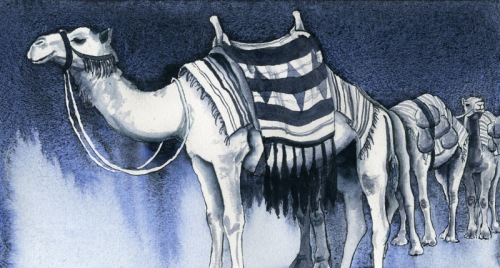
Do you take pictures or do any types of research before you start a project?
Yes, I do lots of research; in fact, I’m particularly drawn to projects where research is required. Investigating historic fashion, rare plants, and obscure legends is all part of the fun.

Do you think the Internet has opened doors for you?
Without a doubt. My whole business is conducted online.

Do you use Photoshop with your illustrations?
I do use Photoshop, but just for minimal editing, such as adjusting for contrast or stitching a piece together if it was too large for the scanner bed.
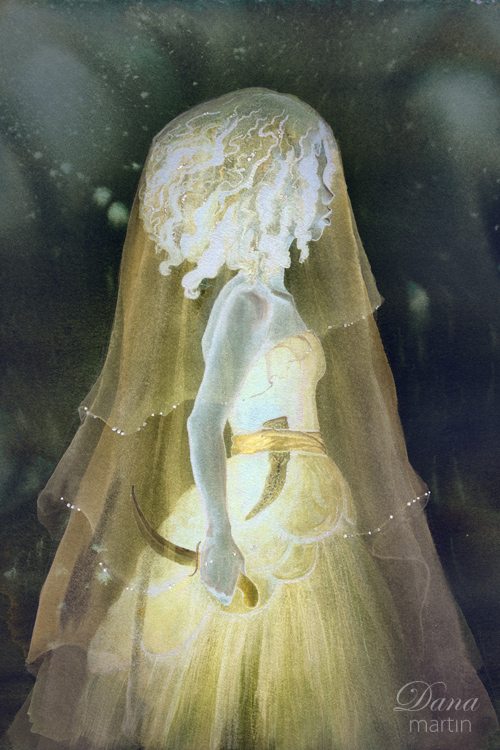
Do you own or have you used a Graphic Drawing Tablet in your illustrating?
I’ve used them, but so far I don’t need a tablet enough to invest in one.
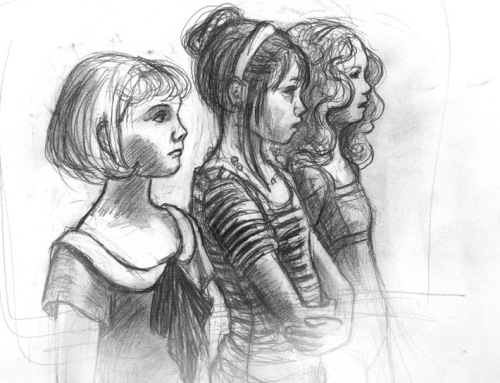
Do you find exhibiting your artwork gets you jobs?
No, because most of the shows I’ve been in have not been the sort that would attract editors and art directors.
Rather, the shows are their own experience. They’re an opportunity to interact with my audience and hear their thoughts on my work. I never know what to expect, but people have actually been extraordinarily positive and encouraging, and I always come back from a show energized to make more art.
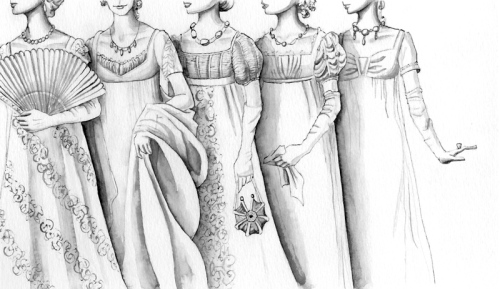
Do you have any career dreams that you want to fulfill?
Yes, so many! Bringing out my own picture book is the one I’m focused on at the moment.
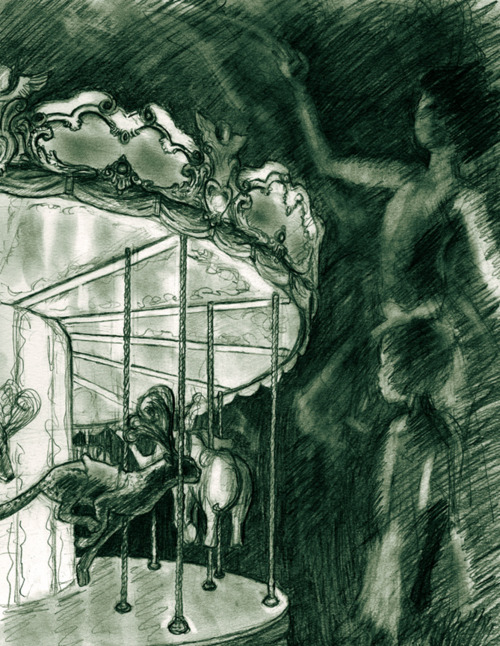
What are you working on now?
I have some small magazine assignments, but the projects I’m most excited about right now are actually personal ones. I’m working on a picture book manuscript set in Venice, and I’ve also started a new series of paintings. I’ve recently become fascinated with really limited palettes, so each of the paintings (which are based on some old stories) has a different dominant color. They’re also all set in different decades, because I wanted to explore some of the ways fashion has changed in the last hundred years.
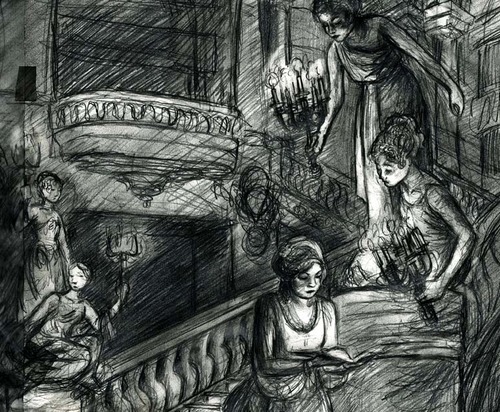
Do you have any material type tips you can share with us? Example: Paint or paper that you love – the best place to buy – a new product that you’ve tried – A how to tip, etc.
My painting methods can be hard on the paper, so I need something sturdy. Arches cold press is the paper for me. It stands up to washes, doesn’t tear from tape or masking fluid, has enough texture to get interesting effects with the paint, but not so much that it interferes with pen work.
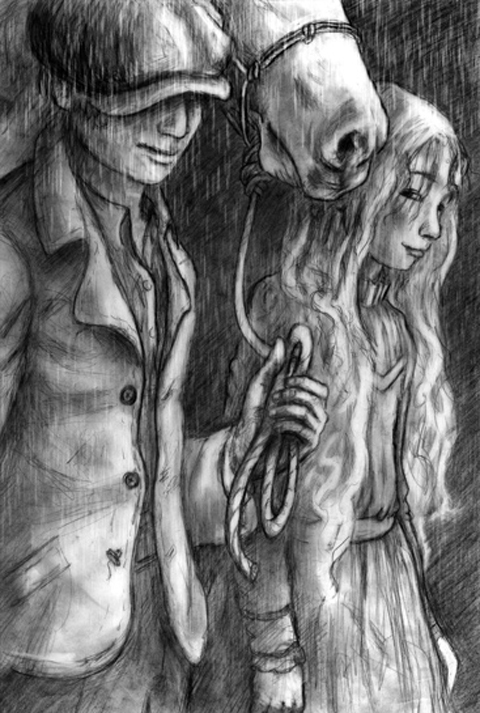
Any words of wisdom on how to become a successful writer or illustrator?
Everyone knows they have to work hard, but I don’t think everyone realizes how long they’ll be working hard. This is a marathon, not a sprint. It’s easy to neglect everything else in the pursuit of your craft, but over time that undermines you. Art has to be about something. If you cut yourself off from your friends, your hobbies, and whatever else fuels you as a person, you eventually will have nothing to say artistically. In the words of Gore Vidal, the unfed mind devours itself.
So keep an eye out for all the wonderful and interesting things that are happening around you and cultivate an agile mind. That, rather than any technical skill, is an artist’s greatest asset.
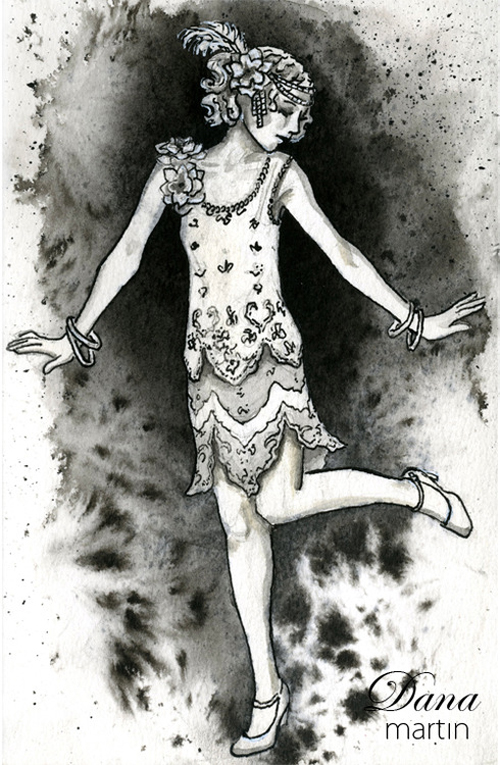
Thank you Dana for sharing your illustrations, journey, and process with us this week. We look forward to following your career, so please let us know of all your future successes.
You can visit Dana at www.dana-martin.com or find out what’s new with her on her blog at http://danamartinillustration.tumblr.com/
Please take a minute to leave Dana a comment. I am sure she would love to hear from you and I would appreciate it, too.
Talk tomorrow,
Kathy
Filed under: Book, illustrating, Illustrator's Saturday, inspiration, Process, Tips Tagged: ABDO Publishing, Dana Martin, Liza Mullarkey, Montserrat College of Art



Your illustrations are lovely! Thanks for sharing your process!
I really loved reading about Dana and her work is stunning. So very talented. I also think it’s great that she went to a smaller University. Sounds so wonderful.
very beautiful and lovely illustration. Enjoy reading her process and journey.